Titanium Anodes for Electroplating: The Core of Efficient and Stable Processes
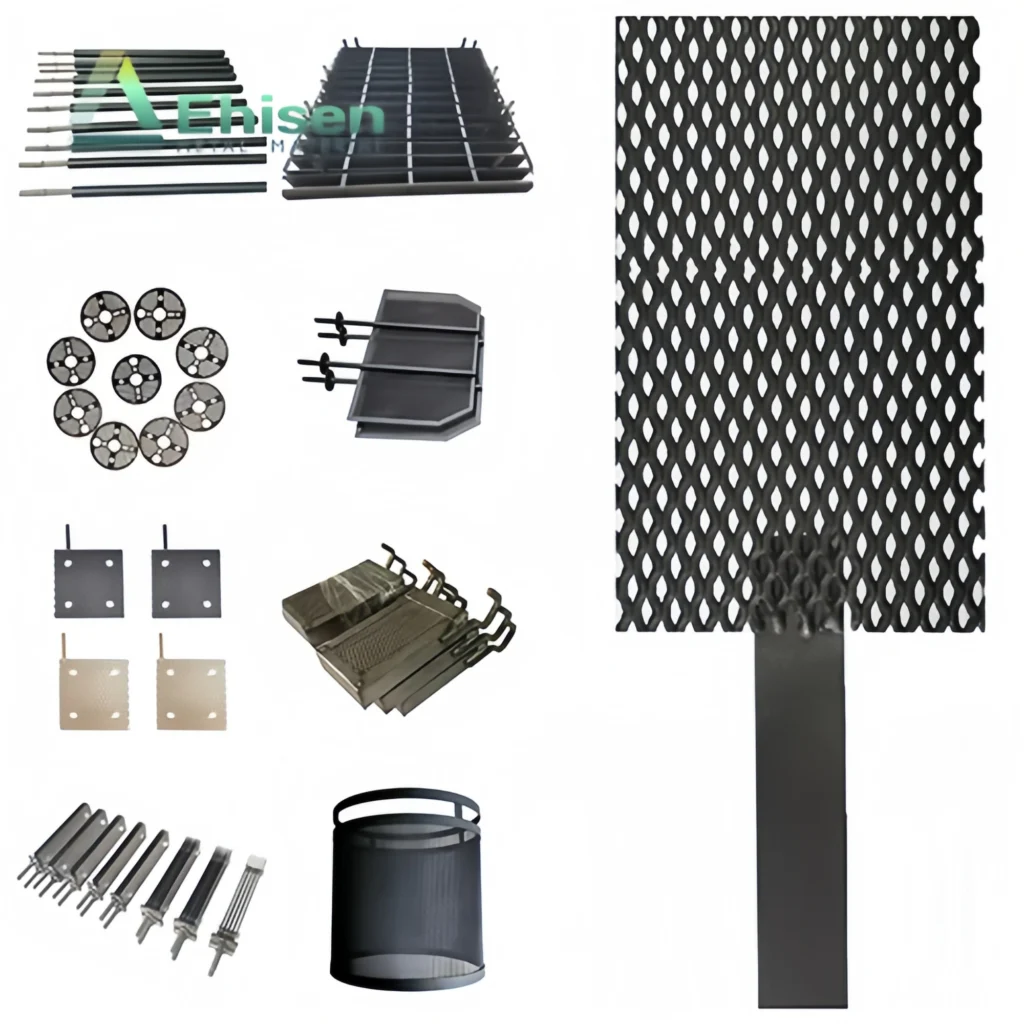
Titanium anodes have revolutionized modern electroplating by serving as the indispensable, insoluble backbone for efficient and high-quality production. Their superior electrocatalytic activity significantly reduces energy consumption, while their exceptional stability ensures perfectly uniform current distribution for consistent, high-purity coatings. Crucially, they eliminate metallic contamination from anode sludge, extending bath life and enhancing process reliability. As the cornerstone of advanced applications—from PCB manufacturing and functional plating to trivalent chromium processes—titanium anodes are the strategic choice for achieving superior results, reducing operational costs, and meeting stringent environmental standards.
Beyond mere components, titanium anodes are fundamental engineering solutions that elevate electroplating operations to new levels of precision and sustainability. They provide unmatched electrochemical stability for superior deposit uniformity, even on complex geometries, while their robust insoluble nature safeguards valuable electrolytes against metallic contamination. This synergy of performance and protection not only drives down operational expenditure through dramatic energy savings and reduced maintenance but also future-proofs production lines by enabling next-generation processes like pulse plating and trivalent chromium applications. Ultimately, the adoption of titanium anodes represents a critical investment in operational excellence, product quality, and environmental stewardship, solidifying a competitive edge in the advanced manufacturing landscape.
Titanium Anode For Electroplating

1.Ir-Ta Anode Wire
In the field of electroplating applications, the required coating metal is dissolved in the electrolyte, the plated metal substrate serves as the negative electrode, and the anode serves as the positive electrode, forming a complete current transmission cycle. A chemical reaction that occurs simultaneously with electroplating in the electroplating bath is the evolution of oxygen on the anode surface.
Compared to non-inert anodes such as graphite, the advantage of Ir-Ta Anode Wire is that they maintain a stable positive-to-negative distance (distance between electrodes) over their service life. Graphite anodes will gradually dissolve during use, causing the distance between electrodes to increase, while inert Ir-Ta Anode Wire can ensure stable voltage and product quality. Due to the catalytic properties of the platinum group elements, the exchange current density on the electrode surface is large and the oxygen precipitation overpotential is low. A special process is used to form a fine-structured oxide film on the titanium surface, which achieves maximum results per unit electrode area. active surface area, so it is particularly suitable for high-speed and high-current density electroplating production.
In addition to Ir-Ta Anode Wire and graphite, lead anodes can also be used in this field. However, when lead anodes dissolve, their reactants can negatively impact the environment. These problems can be avoided by using Ir-Ta Anode Wire. The oxygen-evolving titanium anode has a lower operating voltage, which can also save energy.
Products Specifications
Ir-Ta Anode Wire | ||
Coating Type | Platinum, Iridium Tantalum, etc. | |
Base material | Pure titanium (Gr1) | |
Titanium material standard | ASTM B348 | |
Operating temperature | 32°C max | |
Iridium and tantalum plating | Ir+Ta system, Ir consumption per square meter is 10g, coating thickness is more than 3.5 microns | |
Size | 3*360mm, 5*360mm, 8*360mm, etc | |
Platinum plating thickness | 3 microns, 3.5 microns or OEM | |
Current density(A/㎡) | 80A/m² max | |
Processing method | Iridium tantalum | Brushing + sintering |
Platinum plating | Electroplating | |

2.Platinum-plated Titanium Anodes For Hard Chromium Plating
In hard chrome plating, paraffinized titanium anode is an excellent choice because it minimizes the production of dangerous lead sludge and improves dimensional stability, which makes the plating process more stable, uniform, and consistent in thickness. Furthermore, platinized anodes can be made to fit the shapes of the work components that need to be plated, giving them far greater flexibility in terms of shaping and dimensioning. Since titanium expanded mesh generates a consistent current density and superior plating outcomes, Ehisen uses it as a substrate.
Essential Parameters:
| Base metal | Gr1, Gr2 titanium |
| Coating material | Pt |
| Temperature range | <80 ℃ |
| Current density | ≤ 5000 A/m² |
| Fluoride content | <50mg / L |
| Precious metal content | ≥20g / m2 |
| Coating thickness | 0.2-10μm |
| PH value | 1-12 |
| Anode shape | Mesh, Bar, Tube, plate |

3.Platinum-Plated Titanium Anode Brush Head For Electroplating
The platinum layer is firmly combined with the titanium base substrate,with stable performance,high current and low voltage,It is used in precious metal plating tanks and the coating is uniform.
Electroplating process technology will be used to create electrodes with platinum plating on titanium. Additionally, the titanium substrate that has been treated is entirely or partially plated with platinum.
The product’s silver-white surface has the benefits of a fine and uniform coating, strong bonding, a high output current, and a long service life.
When platinum is either metallurgically clad or plated onto a titanium substrate, it serves as an anode material. When titanium is made anodic, stable oxide layers emerge. Anodes that have been platinized are consumed at a rate of 6 to 10 mg/A-y.
Product Parameter:
Base material | Titanium (Gr1, Gr2, TA1, TA2) |
Shape | Arc-shaped (customized) |
Current density | <8000 A/m2 |
Production process | electroplating |
Coating material | Platinum (purity 99.99%) |
Precious metal content | ≥ 21.48 g/㎡ |
Platinum layer thickness | 0.2-15 μm |
Temperature | <80℃ |
PH value | 1-12 |

4.Platinum Coating Titanium Fiber Felt
Metal titanium fiber felt by our company is made according to foreign technical standards, using micron-level pure titanium fibers through a special paving process and a special ultra-high temperature vacuum sintering process. Compared with titanium mesh titanium powder sintered plate, titanium fiber felt has an excellent three-dimensional network porous structure, high porosity, several times larger surface area, uniform pore size distribution, strong corrosion resistance, good water permeability, high porosity, and heat dissipation Good performance, high current density, low voltage, stable performance, long life and so on. It is widely used in various industries such as military industry, aerospace, civil and so on. In various domestic industries, the titanium fiber felt produced by our company is a good alternative to imported products. Our company can customize and produce titanium fiber felt with various specifications and properties according to customer requirements.
| Item | Platinized titanium fiber felt |
| Thickness | 0.25mm,0.4mm,0.5mm,0.6mm,0.8mm,1.0mm |
| Platinized thickness | 0.5-8mm |
| Purity | 99.5%min |
| Shape | Square,rectagle,disc or customized |
| Color | Grey white |
| MOQ | 1 pc |
| Application | Hydrogen Production,PEM electrolytic cell |
Core Roles: How Titanium Anodes Create Value in Electroplating
Acting as the “unseen command center” of the plating process, titanium anodes deliver value through these key functions:

1.Maintaining Bath Purity & Ensuring Coating Quality
Traditional Pain Point: Soluble anodes (e.g., phosphor copper balls, zinc plates) continuously dissolve, generating metal sludge that leads to impurity accumulation in the plating bath, often causing defects like roughness or nodules.
Ehisen Solution: As insoluble anodes, our titanium anodes barely dissolve during operation, eliminating contamination from anode sludge at its source. This results in extended bath life, superior stability, and ensures consistent, high-quality plating with minimal defect rat

2.Enabling High-Efficiency Electrocatalysis & Reducing Energy Costs
Traditional Pain Point: Conventional anodes (e.g., lead alloys) have high oxygen evolution overpotential, leading to significant wasted electrical energy.
Ehisen Solution: Our precious metal oxide coatings (e.g., IrTa, IrTaSn) possess extremely high electrochemical catalytic activity, significantly lowering the overpotential for oxygen or chlorine evolution reactions. This translates directly to reuced cell voltage by 0.5 – 1.0V, slashing your energy consumption by 15%-30% and delivering substantial cost savings.
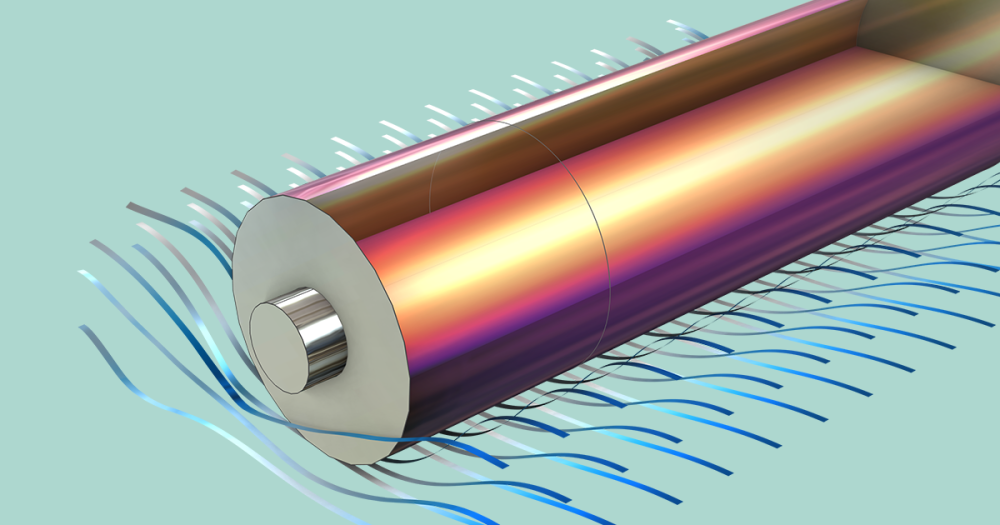
3.Providing Exceptionally Stable Current Distribution
Traditional Pain Point: Irregular anode shape or uneven dissolution causes inconsistent current distribution, resulting in varied coating thickness, especially on complex parts.
Ehisen Solution: We offer titanium anodes in mesh, plate, and strip forms, customizable for your specific tank and workpiece geometry. Their rigid structure maintains a consistent shape throughout their lifespan, ensuring highly uniform and stable current distribution. This dramatically improves throwing power and covering power, meeting the most demanding plating standards.
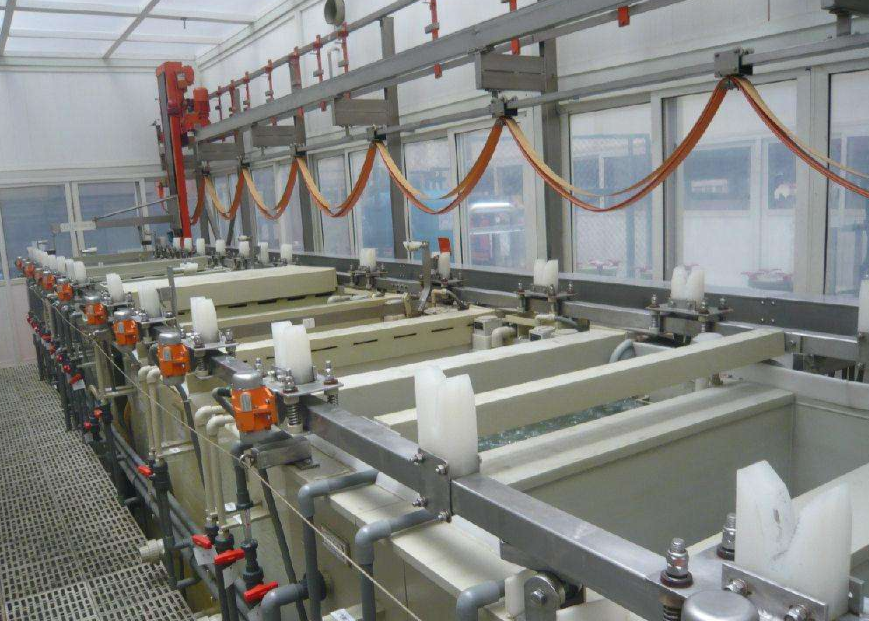
4.Enabling Advanced Processes & Powering Technological Upgrades
Traditional Pain Point: Conventional anodes struggle with advanced processes like trivalent chromium plating or pulse plating.
Ehisen Solution: The excellent chemical corrosion resistance and fast response characteristics of our anodes make them the ideal choice for advanced processes like pulse plating, precious metal plating (gold, rhodium), and trivalent chromium plating. We are your reliable partner for technological advancement and high-value-added products.
Application Scenarios: Specific Problems Solved by Ehisen Anodes

Extensive Application Fields: Multi-Scenario Solutions with Titanium Anodes
Titanium anodes demonstrate exceptional versatility within the electroplating industry, providing optimized solutions for nearly all major plating processes by offering superior performance, consistency, and cost-effectiveness where traditional anodes fall short.
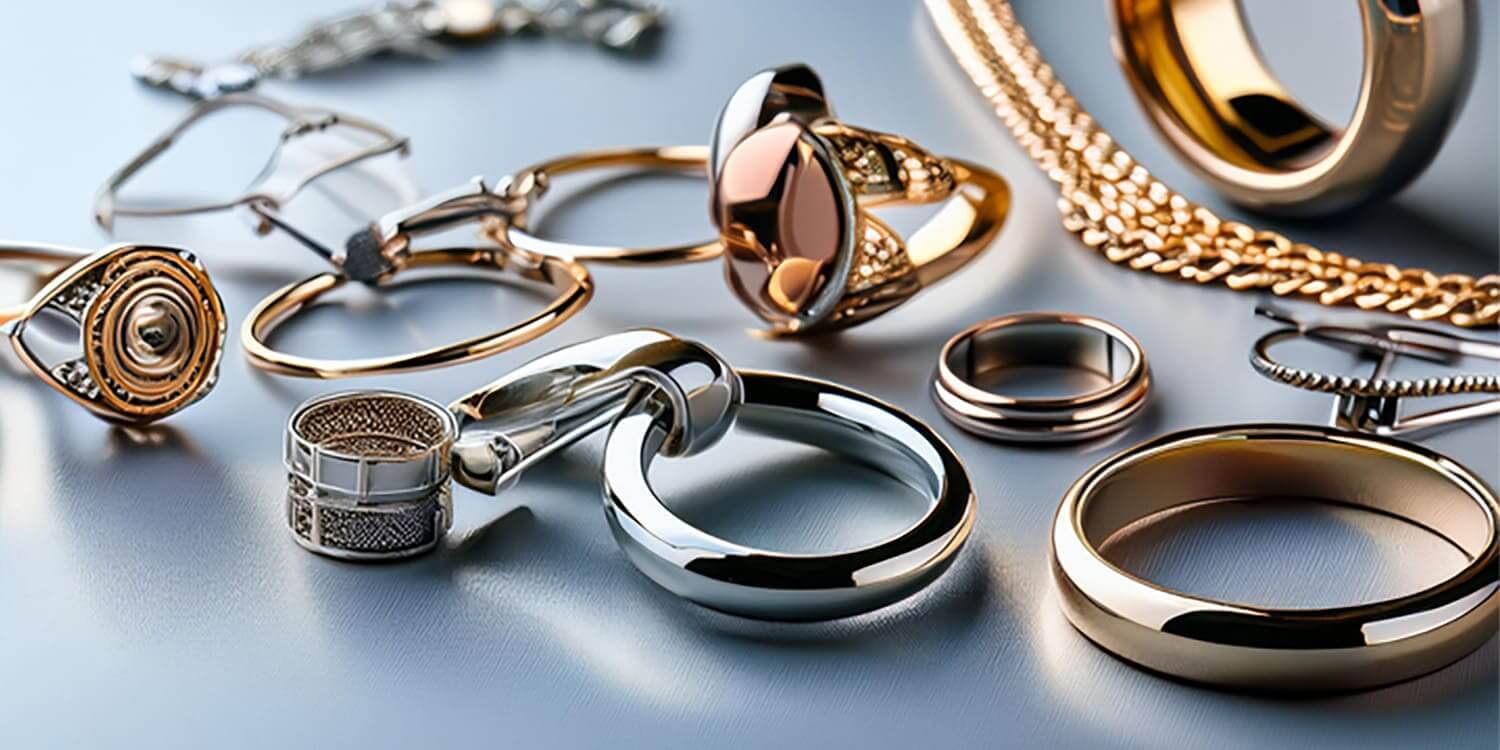
Decorative and Protective Electroplating: Titanium anodes are extensively employed in processes such as chromium, nickel, and zinc plating. Their stability is crucial for producing bright, uniform, and corrosion-resistant finishes on automotive trim, household fixtures, and various consumer goods. A standout application is in aluminum wheel hub plating, where anodes coated with specialized mixed metal oxides (e.g., Pt-Ir-Ta-Sn) deliver exceptional performance bywithstanding the aggressive chemical environment and ensuring consistent, high-quality decorative chrome deposits.
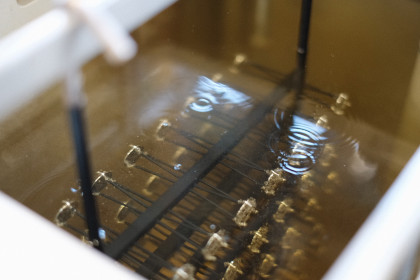
Precious Metal Electroplating: These anodes are the ideal choice for critical applications in gold, silver, rhodium, and palladium plating, as well as in precious metal recovery systems. Their complete insolubility is paramount here, preventing costly contamination of expensive plating solutions and ensuring the highest purity of the deposited precious metal layer. This makes them indispensable for the jewelry, electronics, and luxury goods sectors.
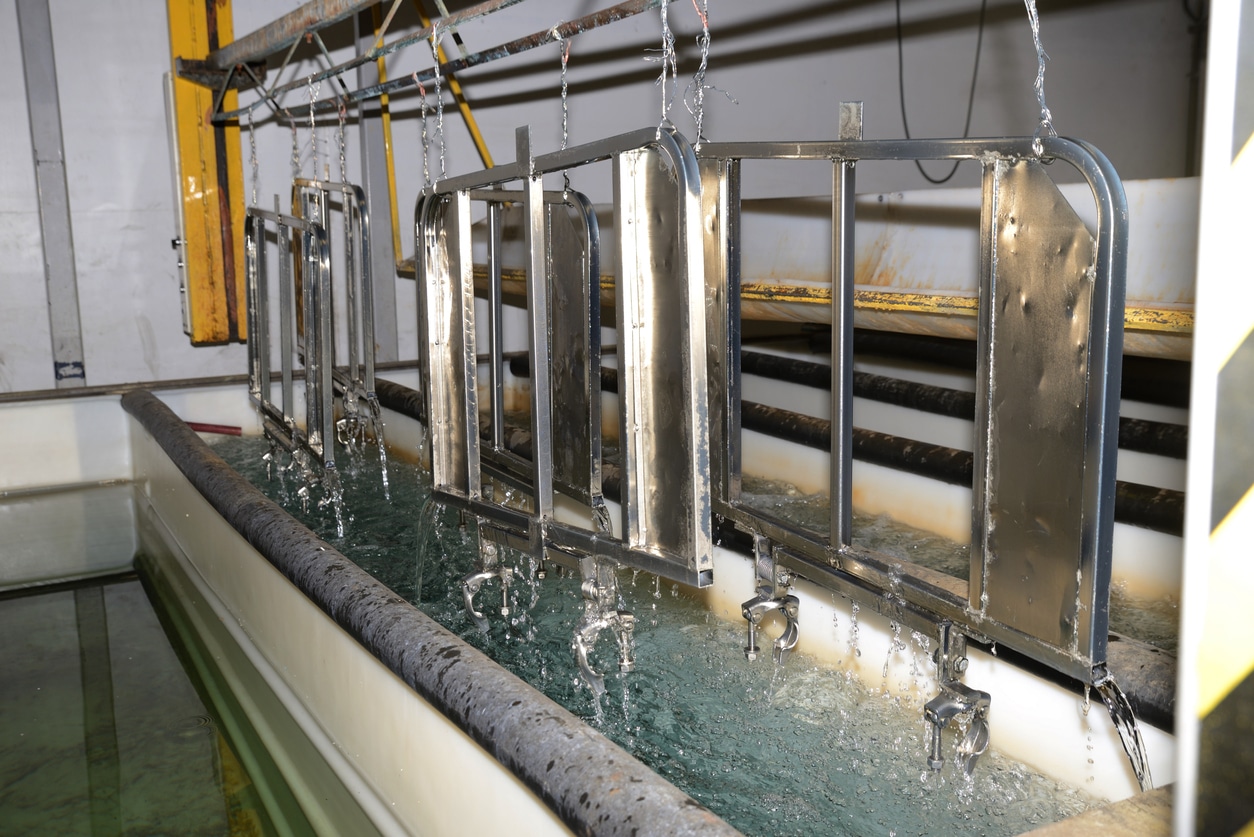
Electronics Industry Electroplating: Titanium anodes play a key role in the manufacturing of Printed Circuit Boards (PCBs), copper foil production, and post-treatment. Advanced technologies, such as Double-Layer Insoluble Titanium Mesh Anodes for Pulse Copper Plating, are specifically designed for high-demand applications like plating through-holes (PTH) and pulse filling of microvias. This technology provides unparalleled throwing power, enabling the successful plating of holes with extremely high aspect ratios (up to 30:1), which is essential for manufacturing modern, multi-layered, high-density interconnect (HDI) PCBs.

Other Specialized Applications: The utility of titanium anodes extends to several other critical surface treatment processes. This includes the anodizing of aluminum foil for capacitors, where they provide stable and efficient operation. They are also increasingly adopted in both hexavalent and trivalent chromium plating systems. In trivalent chromium plating, which is a more environmentally friendly alternative to hexavalent chromium, specific catalytic coatings on titanium anodes are essential for maintaining process stability and achieving the desired decorative finish.
| Application Field | Traditional Pain Points | Value of Ehisen Titanium Anodes | Recommended Product Type |
|---|---|---|---|
| PCB Copper Plating | Extremely high demand for uniformity within vias (TP value); Uses highly acidic copper baths. | Superior current distribution ensures uniform plating in high-aspect-ratio through-holes; Excellent acid corrosion resistance ensures long life. | Mesh Anodes |
| Hardware & Faucet Chrome Plating | Hexavalent chromium baths are highly oxidative and corrosive; Trivalent chromium process is anode-sensitive. | Highly corrosion-resistant coating, far outlasting lead-based anodes; Stabilizes trivalent chromium bath, preventing oxidation. | Plate/Mesh Anodes (IrTa-based coatings) |
| Wheel/Rim & Jewelry Precious Metal Plating | Expensive baths; anode contamination causes massive losses; Requires high current efficiency. | Completely insoluble, protecting valuable bath solutions; High catalytic activity saves precious metal salts. | Plate Anodes (Precious metal coatings) |
| Continuous Zinc/Tin Plating | High production rates demand long-term, maintenance-free operation and stable conductivity. | Exceptionally long service life, eliminating frequent replacement; Excellent conductivity saves energy. | Strip Anodes |
Unique Advantages of Titanium Anodes: Why They Became the Industry Standard in Electroplating
Titanium anodes have earned their dominant position in the electroplating industry by offering a combination of performance and economic benefits that traditional anode materials simply cannot match. Their widespread adoption is driven by a series of compelling, quantifiable advantages that directly enhance efficiency, reduce costs, and support sustainable operations.

1. Exceptional Energy-Saving Characteristics
The heart of this advantage lies in the advanced electrocatalytic activity of the precious metal oxide coatings (e.g., Ru-Ir or Ir-Ta blends). These coatings drastically lower the overpotential required for oxygen or chlorine evolution reactions at the anode surface. Compared to conventional lead alloy anodes, this reduction in overpotential can be approximately 0.5V or more. Since power consumption is calculated by the formula Power (kW) = Current (A) × Voltage (V), this voltage drop translates into direct and substantial energy savings of 15% to 30%. Remarkably, certain Ehisen coatings achieve a lower oxygen evolution overpotential than even platinum-coated anodes, while simultaneously offering a service life that can exceed platinum by 100%, delivering unparalleled value and performance.

2. Outstanding Stability and Extended Service Life
Titanium anodes are engineered for longevity. The commercially pure titanium substrate possesses excellent inherent corrosion resistance, while the firmly bonded oxide coating is designed to withstand highly aggressive electrochemical environments. This results in exceptional chemical and electrochemical stability throughout countless plating cycles. Under standard operating conditions, a properly specified titanium anode can deliver 5 to 10 years of reliable service. Even when subjected to high current densities, extreme temperatures, or highly corrosive media (e.g., chromic acid baths), these anodes maintain stable performance for 3 to 5 years, far outlasting their lead or graphite counterparts which degrade and require frequent replacement.

3. Environmental Benefits & Bath Purity
As insoluble anodes, titanium anodes are fundamentally different from soluble anodes like copper or zinc. They do not dissolve into the plating solution during operation. This eliminates the primary source of metallic contamination and sludge formation, a common issue that leads to rough deposits and defective plating. By maintaining a cleaner, more stable bath chemistry, they ensure consistently high deposit quality and drastically reduce the frequency of bath purification and dump-and-replace cycles. Furthermore, this purity minimizes the unnecessary consumption of expensive organic additives, which are often degraded by impurities, leading to significant long-term cost savings and more predictable process control.

4. Lightweight and Ease of Use
The transition from heavy lead-based anodes to titanium represents a dramatic improvement in ergonomics and handling. Titanium’s high strength-to-weight ratio means that anodes are significantly lighter—often only a fraction of the weight of a comparable lead anode. This lightweight design simplifies installation, routine maintenance, racking, and handling, reducing worker fatigue and the risk of injury. It also allows for the design of larger, more complex anode baskets or racks without becoming unmanageably heavy.

5. Reusable Substrate
Perhaps one of the most economically attractive features is the reusability of the titanium substrate. After the active coating eventually reaches the end of its service life (after many years), the anode is not discarded. Instead, the spent coating can be stripped off, and the bare titanium base can be recoated and returned to service “as new”. This creates a powerful circular economy model, significantly reducing long-term material costs and environmental waste compared to disposable anodes. This makes the total lifetime cost of ownership exceptionally favorable.
Technical Specifications: In-Depth Performance Parameters of Titanium Anodes
5. Technical Specifications: In-Depth Performance Parameters of Titanium Anodes
For a comprehensive and professional understanding of our titanium anodes, the following key technical parameters and manufacturing standards define their superior quality and performance. These specifications are critical for engineers and decision-makers to evaluate their suitability for specific applications.

1. Substrate Material Requirements: The Foundation of Reliability
Material Grade: We utilize commercially pure titanium grades, primarily TA1 (Gr1) and TA2 (Gr2), which boast a titanium content of ≥ 99.5%. This ensures an optimal balance of high mechanical strength, exceptional formability, and unparalleled corrosion resistance.
Surface Preparation: The titanium substrate undergoes a critical surface preparation process—typically grit blasting or electrochemical etching. This is not merely a cleaning step; it creates a meticulously controlled micro-rough surface profile that drastically increases the surface area and provides锚点 (mechanical anchoring points) for the coating. This process is essential for achieving a coating adhesion strength ≥ 30 MPa, preventing delamination during long-term operation.
2. Coating Specifications: The Engine of Performance
Coating Composition: The active catalytic layer is a precisely engineered mixture of noble metal oxides. Iridium Dioxide (IrO₂) serves as the primary component, providing outstanding corrosion resistance and catalytic activity in oxygen-evolving environments. Ruthenium Dioxide (RuO₂) is expertly blended in to enhance electrical conductivity and lower overpotential. Other valve metal oxides, such as Tantalum (Ta₂O₅) or Tin (SnO₂), are added to the formulation to further fine-tune the catalytic properties, stabilize the crystal structure, and extend the operational lifespan for specific electrolytes.
Coating Thickness & Uniformity: The coating is applied to a precise thickness, typically ranging from 5 to 20 micrometers (μm). Consistency is key; we ensure a uniform, defect-free coverage across the entire active surface. This precise control prevents localized high-current-density areas that can lead to premature coating degradation and ensures predictable, consistent performance throughout the anode’s life.
3. Electrochemical Performance: Quantifiable Operational Excellence
Current Density Range: Our anodes are designed to operate efficiently within a wide standard current density range of 100 – 1000 A/m². For specialized applications requiring intense current loads, our anodes can handle peak or极限 (limit) current densities exceeding 1500 A/m² without significant degradation.
Cell Voltage: The operational cell voltage is highly dependent on the specific electrolyte composition, temperature, and current density. Typically, it falls within a range of 1.5 to 3.5 V. The advanced catalytic coating’s primary function is to minimize the anode’s contribution to this voltage, directly translating to lower energy consumption.
Oxygen Evolution Potential (OEP): This is a core measure of the coating’s catalytic efficiency. Our anodes exhibit an exceptionally low oxygen evolution potential, which can be as low as 1.45 V (vs. Standard Hydrogen Electrode, SHE). This represents a significant reduction of 0.2 – 0.3 V compared to traditional lead-based anodes, quantifying the direct energy savings achievable.
| Classification Method | Type | Characteristics Description | Primary Application Scenarios |
|---|---|---|---|
| By Coating Composition | Iridium Mixed Metal Oxide (Ir MMO) Coating | High catalytic activity, excellent corrosion resistance | Various electroplating environments |
| Platinum-Iridium-Tantalum-Tin Oxide Coating | Electrocatalytic performance and enhanced service life superior to platinum-coated anodes | Aluminum wheel hub plating | |
| Titanium-based Lead Dioxide Coating | Oxygen evolution potential ≥1.7V, strong oxidizing ability; Low cost, long operational life | Electroplating, smelting, wastewater treatment | |
| By Substrate Shape | Mesh Titanium Anode | High specific surface area, excellent current distribution | High-speed electroplating |
| Plate/Sheet Titanium Anode | Sturdy structure, uniform current distribution | General purpose electroplating | |
| Rod/Tubular Titanium Anode | Suitable for special tank configurations and space constraints | Specially configured electroplating tanks | |
| Strip Titanium Anode | High flexibility, customizable length | Continuous electroplating production lines |
Selection, Usage Guide & The Ehisen Advantage
Providing expert guidance is a cornerstone of our service at Ehisen. Selecting the right anode is critical for optimizing your process, and our team is here to ensure you make the perfect choice based on a comprehensive analysis of your needs.

A Guide to Selecting the Right Titanium Anode
The optimal anode selection depends on a careful evaluation of several key factors:
Bath Chemistry: The specific composition of your electrolyte is the primary deciding factor. Factors such as the presence of aggressive ions (e.g., chlorides), fluoride, sulfuric or chromic acid, and organic additives directly determine the most suitable coating type to ensure longevity and prevent premature coating degradation.
Process Parameters: Key operational variables must be considered, including the operating current density, bath temperature, and pH level. These parameters influence the required coating catalytic activity and stability.
Tank & Cell Design: The physical layout of your plating system is crucial. This includes the anode-to-cathode distance and ratio, the tank size, and its geometry. These factors dictate the optimal anode shape and configuration to achieve uniform current distribution.
Cost-Benefit Analysis (Total Cost of Ownership): Look beyond the initial purchase price. Evaluate the total cost of ownership, which includes the initial investment, ongoing energy consumption (a major saving point with our anodes), maintenance costs, and the expected service life. Our anodes consistently prove to offer a superior ROI.
Best Practices for Use and Maintenance
To maximize the performance and lifespan of your titanium anodes, we recommend:
Implement a schedule for regular inspection of the coating to monitor for wear.
Always follow proper cleaning and maintenance procedures. Avoid using highly abrasive chemicals or physical scrubbing methods that can damage the active coating.
For anodes with depleted coatings, remember the titanium substrate is a valuable asset. It can typically be stripped of the old coating and recoated to its original specifications, offering significant cost savings over purchasing a completely new anode.
Why Partner with Ehisen? Your Strategic Advantage

Our technical expertise and product excellence translate into direct benefits for your operation:
Advanced, Application-Specific Coating Technology: We don’t offer a one-size-fits-all solution. Our advanced coatings, such as multi-layered gradient structures (e.g., an intermediate layer with Ru/Ir/Ti oxides and a surface layer containing Ta/Nb/Sn oxides), are engineered for specific environments. This innovation provides dual resistance to both oxygen and chlorine evolution, minimizes harmful gas emission, protects sensitive organic additives, and ensures exceptional bath stability.
Unmatched Customization & Design Capability: We provide comprehensive custom solutions tailored to your exact requirements. We consider your tank conditions, process parameters (current density, temperature), and product goals (e.g., throwing power, covering power) to design the ideal anode, including its shape, coating formulation, and conductive structure.
Rigorous Quality Control & Traceability: Our commitment to quality is unwavering. Every step of our manufacturing process—from substrate pre-treatment to precise coating preparation—is subjected to stringent quality checks. This ensures every anode delivers superior coating adhesion, perfectly uniform coating distribution, and stable, predictable electrochemical performance.
Proven Performance Commitment: When you choose Ehisen, you invest in proven results. We deliver on our promise of lower operating voltages, high current efficiency, extended service life, and exceptional consistency in deposit quality.
Expert Technical Partnership: Our support extends far beyond the sale. We offer in-depth technical consultation, responsive after-sales service, and proactive maintenance guidance. Our team of experts is dedicated to helping you troubleshoot application challenges and optimize your entire plating process for peak efficiency and quality.

